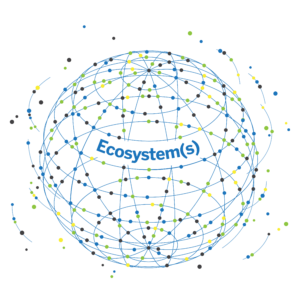Author’s Note: If we had posted this in July 2011 when it was drafted, we would have offered many similar observations but we did not have the Complexity Space Framework — our pattern-based model for change.
The original draft referenced a research report from Constellation Research (which is no longer available) which presented an interesting perspective on how people management technology, could provide a new framework for delivering business results.
“With mounting pressures on business leaders to get the most from their people to hit targets, technologies that manage and optimize people are increasingly at the forefront of strategic investments. As a result, technology leaders will face significant HR technology decisions in the next three years. However, legacy frameworks and decision criteria focus on HR itself – separate from business. The time has come to fully connect HR technology to the business. What’s more, “HR” technology provides too limited a view of what needs to be achieved. The technology picture needs to focus on infusing people decisions and business decisions together – focusing on solving business problems, not further enhancing HR capabilities.” Originally from Constellation Research
Consider the Business Effectiveness Layer
 We have always been intrigued by an organization’s unrelenting drive to gain control over their business ecosystems. With the potential for even greater efficiency between people, processes and data, organizations embraced the triad of technology frameworks that Constellation defined as the “Business Effectiveness Layer” – HR (human capital) technology, big data and predictive analytic technology and enterprise business process/management technology.
We have always been intrigued by an organization’s unrelenting drive to gain control over their business ecosystems. With the potential for even greater efficiency between people, processes and data, organizations embraced the triad of technology frameworks that Constellation defined as the “Business Effectiveness Layer” – HR (human capital) technology, big data and predictive analytic technology and enterprise business process/management technology.
Fast forward more than five years and developing a “Business Effectiveness Layer” is still part of many strategic conversations. We all agree that the need to infuse people decisions with business decisions and visa versa is an important first step toward understanding that people and the outcomes of business strategy are inexorably interconnected. Yet, organizations keep confronting the same “kinds” of challenges.
The challenges continue to resurface when overarching change initiatives are implemented because the underlying system-wide “patterns” inherent in the organization are unseen, unaddressed and unused. When we first encountered the theory and use of patterns in our work, we immediately recognized the need to define, simplify and integrate this concept into language and applications that could reorient business practices for new conversations and significantly different outcomes.
 This is where the Complexity Space™ Framework (CSF) offers value in conjunction with the analytic and connective properties of technology and data across organizational domains. At the pattern-based level, we have identified several categories of patterns that exist between and throughout external and internal systems.
This is where the Complexity Space™ Framework (CSF) offers value in conjunction with the analytic and connective properties of technology and data across organizational domains. At the pattern-based level, we have identified several categories of patterns that exist between and throughout external and internal systems.
Defining (Awareness) Patterns for seeing, understanding and developing the macro conditions for organizational change. They are represented in the CSF by Dimensions (Ecosystem-wide Patterns) and States (strategic “Meta Patterns”).
Action Patterns for developing tactical, adaptive, and agile approaches for continual assessment and response to behaviors and actions when implementing Pattern-based change. They are represented by Catalysts (actions for Pattern-based change) and Indicators (Pattern movements).
Traversing Patterns for navigation and linkage within an internal Ecosystem and between external Ecosystems. They are represented by Linkages and the Navigation Process.
We have also defined episodic Event Patterns called Disruptions, which highlight critical points for evaluating, responding to, or initiating major internal or external pattern shifts.
Working with Patterns affords greater agility and insight into the relationships among the parts of the organization which are often unrecognized or invisible but still essential to the overall health and development of the business.
We believe the development of lenses, language, and distinctions regarding patterns are critical to understanding the relationship between those individual human behaviors and the organization’s Ecosystem(s) – the “patterns in context” which influence everyone and everything interacting within that complex system.
Patterns provide both the structure and the vehicle for change. They are flexible and robust, and are useful in any complex system. The opportunity for these new tools will be the ability to integrate an adaptive approach to evaluating and matching the business and people issues in complex business scenarios, while offering an ongoing engagement between the external data, internal HR, and business functions.
We hope you will share your stories, questions and even disagreements with our articles because that is the only way we can continue to make sure Complexity Works!
Learn more about the Complexity Space™ Framework, with our book, “Complexity Works!” at https://tinyurl.com/Complexity-Works.

Leave A Comment